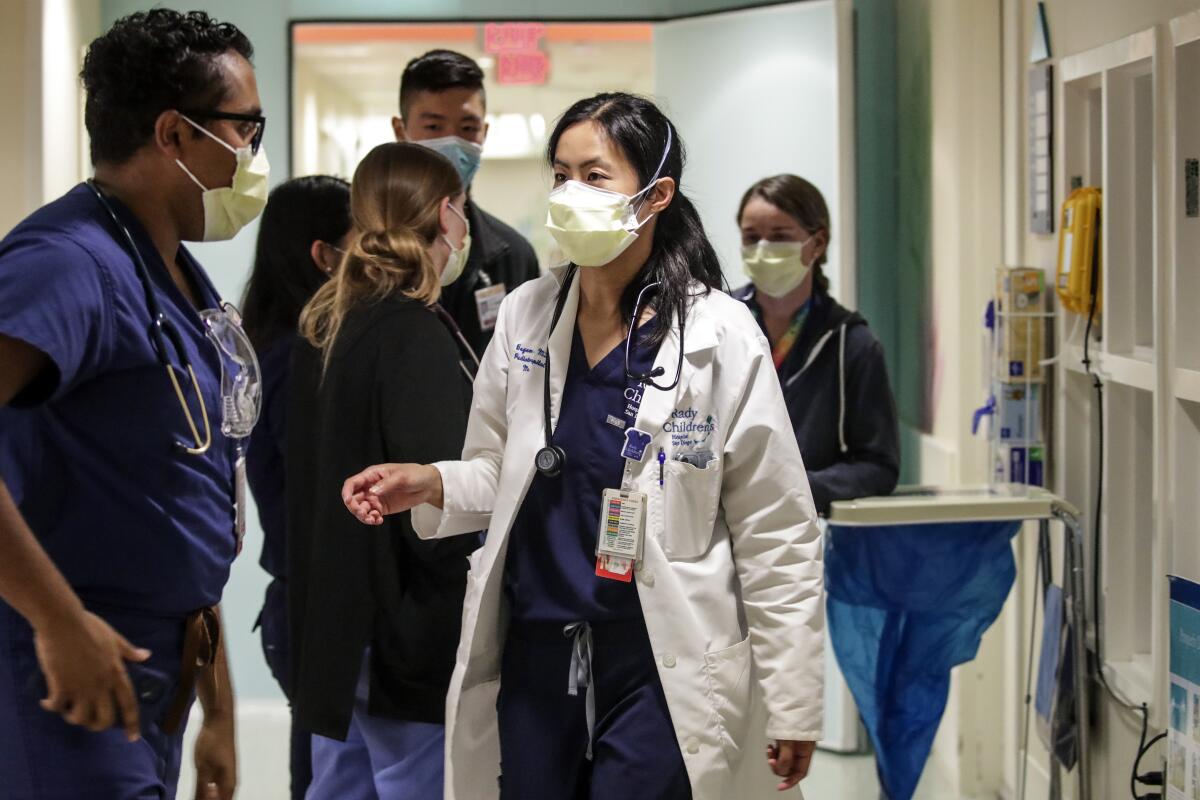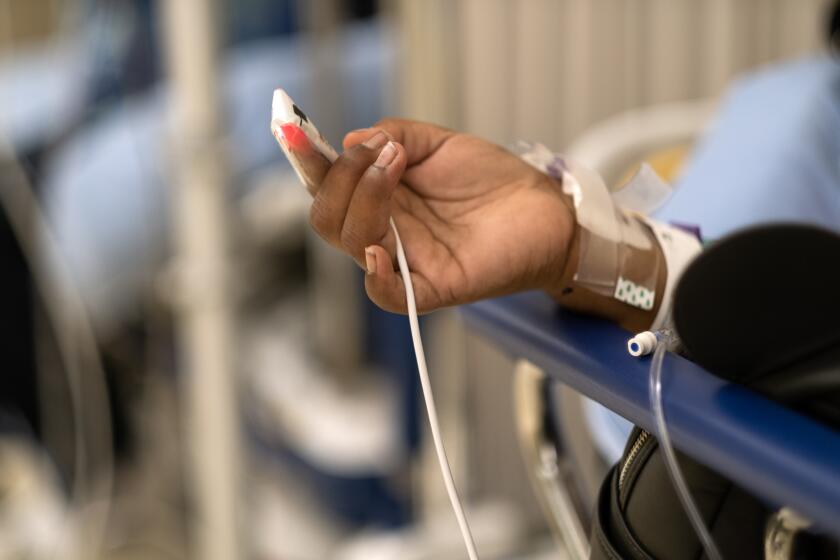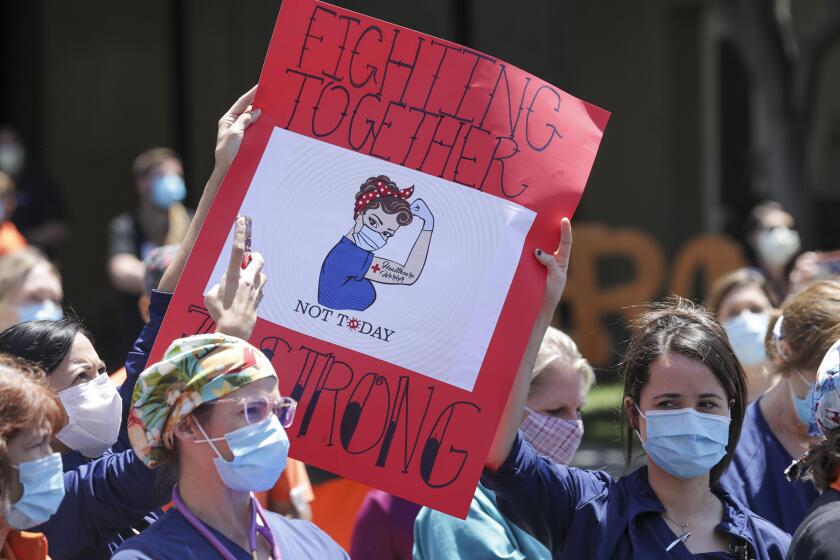Opinion: Biden is ending COVID emergency declarations. But the healthcare worker crisis continues

Last week, the Biden administration announced that it will end the COVID-associated national and public health emergencies on May 11. That means stopping payments for COVID-19 tests and vaccines for some Americans depending on their insurance status, other people losing benefits such as Medicaid and some hospitals receiving less funding — placing higher burdens on our already depleted healthcare workforce.
The pandemic has exacerbated many chronic challenges for the U.S. health system, including the shortage, burnout and inequitable distribution of healthcare workers. More than 230,000 healthcare providers left the profession in the first two years of the pandemic alone.
America is an aging country, which stands to make the problem worse. Our need for healthcare rises drastically as we age, and the needs of our aging population have increased at a much faster pace than the supply of healthcare workers. As a result, the U.S. faces a projected shortage of between 37,800 and 124,000 physicians within the next 11 years. We are already experiencing a punishing shortage of providers that has led to reduced access to care and longer wait times for appointments.
More people have suffered severe sepsis in California hospitals in recent years — including a troubling surge in patients who got sepsis inside the hospital itself, state data show.
The lack of accessible primary care feeds the cycle of this country paying a lot more for complex and expensive care than we do for more cost-efficient prevention as well as early detection and interventions. The result is that we fail to manage conditions like diabetes and high blood pressure before they lead to more severe outcomes such as heart attacks and strokes.
It also steers incentives away from quality of care and toward profit. Some medical specialties that require fewer procedures, and have correspondingly lower compensation, are seeing a drop in interest from trainee physicians. Last year, for example — in the shadow of a historic pandemic — almost half of the fellowship positions to train infectious disease specialists went unfilled.
In addition to growing gaps among types of providers, we also have inexcusable inequities in where healthcare workers are located and who they reach. Even before the pandemic, approximately 80% of the rural United States was classified by the U.S. government as medically underserved. Communities of color often see hospital closures or other removals of service that limit their access to care.
Then there’s burnout. Many experienced healthcare workers are leaving this sector or retiring, a trend expected of an aging workforce but enhanced by the pandemic. Patients are losing the accumulated wisdom of time-tested nurses and doctors. Younger workers, too, are leaving healthcare due to long hours, high stress and compensation levels that match neither the effort healthcare workers put in nor their value.
Still, there is cause for some optimism amid America’s health workforce problems. For one thing, unlike for many other policy challenges, there is bipartisan interest in tackling this issue.
As a healthcare worker, my friend was pushed to the brink during the pandemic — and almost no one came through for her.
To answer that call, we need strategic and substantive investment in expanding training opportunities for doctors, nurses and other healthcare providers — particularly those involved with primary care. The federal government should add more Medicare-funded residency training slots as well as expand its funding for primary care residency training programs and nursing education initiatives to keep pace with our growing healthcare needs.
States should similarly increase funding for their university systems to expand their nursing programs and medical schools and, where possible, start new ones. Existing medical and nursing schools should partner with historically Black colleges and universities as well as institutions that serve rural populations to help reduce inequities in healthcare access.
In addition to stepping up training, improving healthcare worker well-being is in our collective interest. The Biden administration’s allocation of $103 million from the bipartisan American Rescue Plan toward initiatives to reduce burnout and offer healthcare workers more mental health resources is a good start.
But we also need structural changes, including greater compensation for workers and higher reimbursement for non-procedure-based care. To keep workers from leaving this sector, we need stronger career mobility, such as through training subsidies for new jobs within the healthcare industry.
Telemedicine is also part of the solution. Declaration of pandemic-related emergencies at the state and federal levels reduced regulatory barriers for telemedicine consultations. Laws permanently doing away with many of these barriers will help make the healthcare system more accessible and efficient, easing the burden on the workforce.
And we can reduce the worker shortage by enabling immigration of healthcare professionals. The proposed Healthcare Workforce Resilience Act — which stalled in the Senate — would allow the government to grant 15,000 physician immigrant visas and 25,000 professional nurse visas that were available in prior fiscal years but not used. There is already bipartisan support to expand the Conrad 30 waiver program, which allows international medical graduates who do their residency training in the U.S. to remain in this country if they work in underserved areas, where physicians are most needed. There’s no reason to wait on either initiative.
The COVID emergency declarations were always going to end eventually. An ambitious healthcare workforce initiative will improve our lagging status quo and help ensure that America is prepared for what comes next.
Saad B. Omer is the director of the Yale Institute for Global Health, a professor in medicine and public health and an adjunct professor of nursing at Yale University. @SaadOmer3
More to Read
A cure for the common opinion
Get thought-provoking perspectives with our weekly newsletter.
You may occasionally receive promotional content from the Los Angeles Times.












